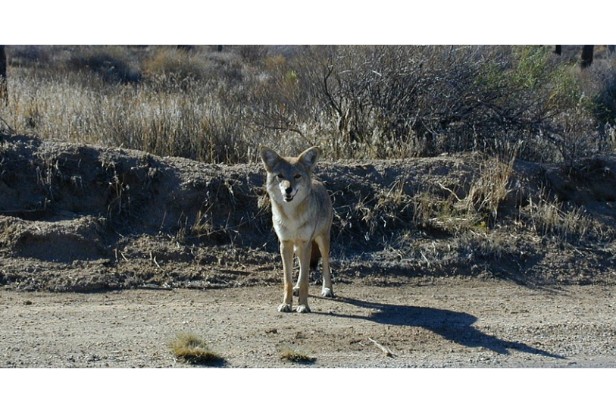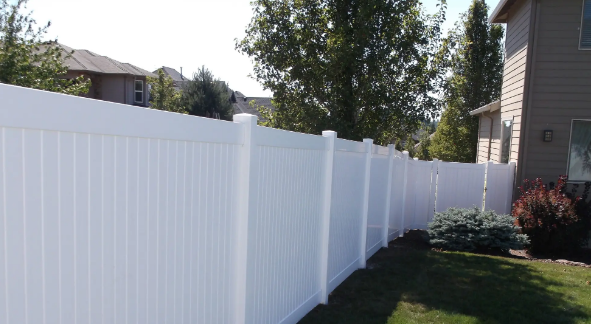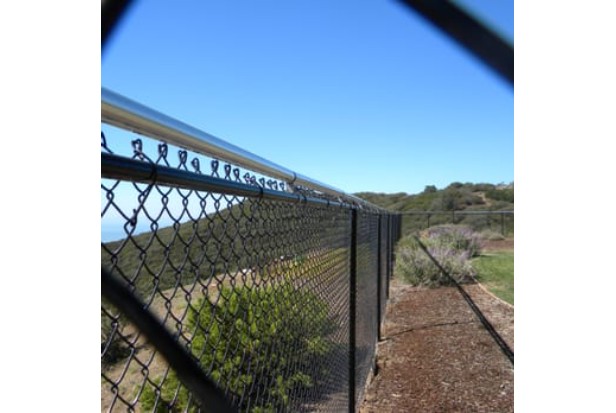Have you ever wondered “how high can a Coyote jump?” A lot of coyotes seem to be around. They can be seen prowling through city trash, poking around farms, and lurking in the woods. Coyotes can enter places they shouldn’t, like through a fence and into someone’s backyard, which is why they can be so annoying.
In reality, when stalking prey, coyotes frequently scale fences. Coyotes have an easier time climbing over or through fences that are low, make it possible to stand properly, have climbable corners, and have large gaps between the bars. To keep out coyotes, fences should be at least 8 feet tall.
Let’s go over a few of the reasons why these cunning animals desperately want to get past fences before we discuss how coyotes jump them.
Table of Contents
Why Do You Need to Keep Coyotes Out?
Coyotes are predators, but what’s so bad about having them around? In actuality, coyotes benefit the environment greatly by controlling small animals like mice, rats, rabbits, and squirrels.
With that being said, there are plenty of downsides to having these noisy canines around.
Coyotes Will Eat Anything
Coyotes eat a variety of things. If you leave pet food out, put food scraps in the trash, or even leave your beloved pet inside, they won’t think twice about coming into your yard to get it.
It’s best to employ a few different coyote-repelling strategies, such as fencing and deterrents, if you want to keep them off your property.
For owners of rural land, coyotes can be a serious threat. There is a chance that coyotes will prey on your chickens, goats, sheep, or even cattle.

Coyotes Become Bold Around People
Coyotes in urban areas interact with people much more frequently than their cousins in more remote areas. The coyote may not have seen you, but it has undoubtedly seen you many times.
These interactions cause coyotes to become less wary of people and more likely to bother both people and their pets. Coyotes living in urban areas are much more likely to approach a person than those living in forests and rural areas.
Why Do Coyotes Jump Fences?
If you reside anywhere on the American continent., If you reside in Alaska, Canada, or Central America, you do so in coyote territory. There are many coyotes, and they can adapt to almost any setting, including urban areas.
There are numerous coyote repellents available online, but a coyote-proof fence is the most effective coyote deterrent. It’s challenging, but not impossible, to build these.
It takes a lot of time and effort to construct a fence high enough, deep enough, and solid enough to keep a coyote out. They just have such amazing access to places!
Consequently, why do these cunning coyotes attempt to scale fences in the first place? They ought to be out in the woods, skulking about.
Let’s check it out!
Coyotes Follow the Same Routes
Coyotes typically hunt either by themselves or in pairs when they go out on a hunt. Their diet consists of, well, everything. These adaptable creatures actually switch between eating berries and tree bark one day and rats and rabbits the next.
They frequently take the same route night after night, whether they are hunting for meat or vegetables. They are able to move around more easily because of this. They are aware of every exit, every hiding place, and the terrain in case they encounter a rabbit or a mouse.
If a coyote jumps your fence because it takes familiar routes, your fence is probably new and follows a different path than the one the coyote usually takes to hunt.
Coyotes Can Be Territorial
The best time for animals to give birth to and raise their young is in the spring. Coyotes are no exception; they typically give birth to their young in March or April.
Coyotes can become aggressive during the period when they are raising pups. Family groups typically patrol an area with a diameter of 5–6 miles. Coyotes don’t mind if other coyote families enter their territory outside of the pup-rearing season, but in the spring, they defend it.
If a coyote jumps your fence for territorial reasons, it’s likely that your fence is new and overlaps coyote territory, similar to how coyotes take the same routes every night.
They might scale your fence in order to look around for other coyotes and make sure no unauthorized people are invading their territory.
Coyotes Will Jump Fences When Stalking Prey
Coyotes are opportunistic predators. They will eat anything that comes their way, whether it be an apple or a passing rabbit.
Because of their opportunistic nature, they may jump a fence in order to continue stalking small, fence-passing prey like mice or rabbits.
This is particularly valid if the fence is simple to scale. Coyotes can use the footholds provided by chain link fences or fencing with grooves to climb higher. Coyotes may be able to fit through the fence’s vertical bars if it has them.
Coyotes are unlikely to abandon their hunt for prey simply because an obstruction stands in their way. They will keep looking for food because they need it.
Urban Coyotes May Lose Their Fear of Humans
Coyotes can be found in major cities like New York, Chicago, and San Francisco, which may surprise you. They are adept at hiding from the prying eyes of people and are hardly ever seen.
Despite this, urban coyotes lose their fear of people in a way that rural coyotes do not. When these urban slickers feel bold, they will steal food from your porch, dig through your trash, and even follow your pets.
Coyotes become more fearless and brazen than ever. When you leave out food, they won’t hesitate to scale your fence to get it.
Coyotes Jump Fences When the Opportunity Arises
If a coyote is snoozing in a thicket of trees and suddenly gets disturbed, it’s more likely to try to avoid the disturbance than to attack it. especially if a person was the one who startled the coyote.
Likewise, if a coyote spots something to eat and it runs away, our cunning friend is unlikely to just let it go without trying to catch it.
Coyotes have the incentive to jump fences because of things like prey and danger. Like humans, they’ll use any means necessary to stay out of harm’s way, including jumping or squeezing through barriers like fences.
Coyotes will also scale fences if a chance to eat something presents itself, as we previously mentioned.

How Do Coyotes Jump Fences?
The variety of fences is enormous. You can choose from wooden, chainlink, electrified, and decorative fences in addition to retaining walls.
Coyote-proof fence construction can be challenging and expensive, as we previously mentioned. According to a 1982 study, the most successful fences tend to be those covering small areas.
Electrified fences will fall down more readily over large areas, and large acreage fences are more difficult to maintain.
How precisely do coyotes climb and cross these barriers? How can you determine whether a coyote has climbed your fence?
If you know a coyote is getting past your fence, the best way to discover where it’s getting through is to look for clues according to the University of California:
- Dirt piles next to a hole beneath your fence
- Coyote hair on the fence
- Scratch marks on solid fences
- Coyote scat near the fence
- Coyote tracks near the fence
To ensure that coyotes stay off your fence and out of your yard, use deterrents once you’ve located the weak spot. A fence’s weaknesses, such as broken boards, might also be discovered. These can be fixed.
Coyotes Will Jump over Low Fences
Coyotes in our neighborhood have a wide variety of tools to climb over fences. A coyote can simply jump a fence, which is one of the simplest ways to get over it.
It must be fairly low, though, in order to jump a fence. Fences for small dogs or those that are ornamental are likely to cause this.
There are a few different height estimates, but the same study that was mentioned above found that coyotes can jump over any fence that is less than 66 inches (roughly 5.5 feet) high. Other sources like the Maine Department of Inland Fisheries & Wildlife, say that 5 feet are sufficient.
If you plan to construct a coyote-proof fence, it’s best to go a little higher rather than a little lower.
Coyotes Will Jump Up and Get a Foot Hold
Our canines, who are athletic, may find another way to jump over a fence if it is just a little too high for them. They will employ both jumping and climbing.
Coyotes will jump against a high fence as high as they can in order to get over it, then they will grab onto anything for a foothold. They will pull themselves up and over the fence if they can get their paws on the top.
When the fence has mesh or chain link—something the coyote can get its paws in—they’ll use it to boost their bodies up and over the fence. This is another way coyotes use the jump and climb technique.
Coyotes Use Corners to Climb Up and over Fences
Coyotes will turn to climbing rather than leaping if the fence is simply too high to even attempt to jump. Always finding a way are these cunning dogs!
Coyotes have two sides to climb, making fence corners a special angle from which they can jump over fences. This is especially true for mesh or chain link fences, where coyotes can get a good foothold, er, paw hold.
Coyotes Straight Up Climb Fences With Footholds
A running start isn’t always necessary for coyotes to scale fences. Certain fence types are easily climbable by them using only their paws.
The easiest fence for a coyote to scale is probably a chainlink fence. All they need to do to climb up like a ladder is insert their paws into the openings.
Some of the other types of fences that coyotes won’t hesitate to climb include:
- Vinyl fences – these are your typical ‘white picket fence’ types and are easy to climb due to the horizontal braces between the slats, which make great toe holds, or, paw holds.
- Metal bar fences – fences that have vertical bars running along them can still provide coyotes with a pretty decent base to climb up.
- Wood fence with slats – Anything with slats, grooves, or exterior patterns can be transformed into a coyote’s personal climbing wall. A coyote can climb a fence unless it is smooth.
The three least expensive fence designs are typically wood, vinyl, and chainlink. This excludes wire fencing for a horse or cow pasture, which is the cheapest option but is easily evaded by our mischievous coyote.

Other Ways That Coyotes Can Get Around Fences
Your neighborhood coyote may be getting through another gap if your fence doesn’t quite meet the criteria for an easily climbable or easily jumped-over fence.
Coyotes are adaptable, as we’ve previously mentioned. If they can’t get over a fence, they’ll try to get through or beneath the fence.
Coyotes Can Dig Beneath Fences
It is advised to bury a galvanized wire apron at least 15 to 24 inches beneath your fence when building a coyote-proof fence. This apron should make an “L”-shaped bend away from the fence.
The reason? Well, if a coyote is determined to get past the fence, they’ll dig a burrow beneath the fence and squeeze through. According to Texas A&M University, these are referred to as “slides” and can be caused by rabbits, gophers, or coyotes.
It is more likely that a coyote made the hole if it is larger.
Coyotes Can Squeeze through Fence Bars
The residential coyotes will have no trouble getting past a fence that is more for decorative purposes than for keeping animals in or out.
A coyote might be able to squeeze through your fence, no matter how high it is, even if it has vertical bars with spaces between them. If they can fit their head through, they can fit their body through too
What Kind of Fence Will Deter Coyotes?
One of the best tools for safeguarding our pets and keeping outsiders like coyotes out of our yards is fencing. In addition to providing an additional layer of security, fencing creates a barrier between external risks and the goods inside.
A list of the various fence types you can erect to solve the coyote issue has been assembled by us.
Tall Fence
A coyote can jump extremely high. The first step in building a fence that discourages coyotes is therefore to make it tall. At a minimum, the fence should be four feet tall. Usually, a four-foot fence is insufficient to keep coyotes out, so you’ll need to use it in conjunction with another coyote-deterrent product.
Instead, erect a six-foot fence around your yard to keep coyotes out. The homeowners’ association should be consulted first, though, as some may find six feet of height to be problematic. Different things happen if you live in a rural area and try to protect livestock like sheep. In that case, you might want to consider installing an eight-foot fence.
Wire Mesh Fence

Steel wires are used to make wire mesh fencing. A strong mesh is created when wires are soldered together. High-tensile wire fencing is frequently swapped out for wire mesh fencing by property owners. Animals cannot squeeze themselves between the wires of wire mesh, so it functions better. Large estates are ideal for it, especially those in rural areas.
Coyotes are kept out of the yard by fences like this one. The wire mesh will prevent coyotes from gaining entry. In order for them to be able to grasp the fabric, make sure the weave isn’t too wide. If you’re persistent enough, you can always find a way to get around a fence. As a result, avoid setting a wooden rail directly on top of the fence.
Roll Bar Fence Topper
Any fence would benefit greatly from a roll bar topper. Two PVC pipes, one smaller than the other, are connected by a heavy-gauge wire. By slipping a larger pipe over this configuration, the roller bar is created. This roller bar, which is connected to the posts above it, supports the top rail of the fence.
Coyote rollers function by rolling the larger pipe over the smaller tube, as the name suggests. The coyote will most likely use its paws to force its way over the top edge of your fence. It will instead run up against the roller bar and retreat to its side of the fence rather than the immovable top rail.
There isn’t much of a visual difference between top rails and roller bars. They are therefore required to follow the HOA’s regulations.
Vinyl Fence
Vinyl fences are a relatively recent development in comparison to wood fences. There are a variety of fence types available, including vinyl fences that mimic wooden fences. An excellent substitute for wire mesh in residential coyote-deterrent fencing could be a PVC privacy fence.
PVC is a better material than wood. Coyotes won’t even bother trying to eat it due to how bad it tastes. Additionally, they won’t be able to climb up its flat surface.
If you install privacy fencing, coyotes won’t be able to see the animals you have in your yard. Privacy fences are similar in that they are typically six to eight feet tall, which acts as an additional deterrent.
Wire Mesh L-Footer Fence
When all else fails, coyotes will attempt to tunnel under fences. By using a wire mesh fence and digging six to eight inches into the ground, you can avoid this. A wire mesh L-footer can be used for a variety of fencing.
L-footers employ the same thick mesh that a fence does. They extend outward at a 90-degree angle after a foot of digging into the ground. Coyotes will be prevented from trying to dig under your fence by the resulting foot. Coyotes dig with their feet, leaving a space between the foot and the ground.
Can Coyotes Climb Chain Link Fences?
Coyotes are little, cunning, and ruthless, so yes, pretty quickly. Thus, the majority of fences and garden walls won’t deter them from entering. Generally speaking, a coyote can cross or get through anything that a cat can, according to this rule of thumb.
For coyotes to be unable to simply dig under a chain-link fence, it must be at least six feet tall and extend 18 inches into the ground. They can’t climb over the fence because it is covered in barbwire or Coyote Roller. Any fence gates must close tightly and with few gaps; your fist should not be able to pass through.
How to Coyote Proof Your Fence?
Coyotes can cause serious damage to your property because of their keen senses, which allow them to quickly spot an easy meal. In light of this, the following is a step-by-step plan to keep them out of your territory.
Putting Up the Fence
You should build your walls tall and deep. A coyote-proof fence should be at least 8 feet tall and extend 18 inches below the ground. Coyotes can climb fences as high as 6 feet, but that is sufficient for them. We will add toppers to deter them from approaching the fence.
In terms of digging, coyotes excel. If they think they can, they’ll dig underneath your fence. Make sure your barrier is tall and penetrates the ground deeply.
The type of fencing has no bearing on coyotes. What is allowed in your neighborhood is the main concern, especially if there is an HOA. Always speak with your HOA before making any long-term improvements to your property to avoid fines.
Next, we’ll discuss three options for enhancing a fence to keep coyotes out: barbed wire, electric fence, or coyote rollers.
Putting Barbed Wire
Typically, barbed wire is permitted in industrial and rural areas. Think about constructing an extender that faces outside and runs the length of the fence. Coyotes won’t be able to scale these.
You could put an electric line through them or add more fencing to enclose them.
Coyotes are not well known for their capacity to ascend backward. Therefore, no matter what you put on the arms, the extension will prevent a motivated coyote from climbing the fence.
Putting Electrical Fence
Upgrade your current electric fence or install a new one. It doesn’t need to be particularly high because coyotes will try to tiptoe through gaps in electrified fencing.
It is especially important to electrify the bottom of the fence because coyotes will try to dig underneath it.
Putting Coyote Rollers

Coyotes can’t scale fences, but you can prevent them from doing so by using rollers. They prefer to jump or climb over the top of the fence with their back paws pressed up against it.
Coyotes won’t try to break into your yard if you use rollers to prevent them from gaining a foothold on your fence. In comparison to barbed wire, it is both more compassionate and equally effective.
You can always make your own with PVC pipe and a drill if you don’t want to spend the money.
There are some additional methods to protect your property from coyotes in addition to these. For instance, you might be considering how to prevent coyotes from getting near your chickens and other livestock.
Apart from cats and dogs, we’ll provide you with some advice on how to keep coyotes away from your beloved pets.
- Avoid leaving bird feeders out overnight, clean up food waste, feed your pets inside, store pet food in a lockable garage or shed, and leave nothing outside that might attract coyotes.
- To keep your chickens safe from coyote attacks, you must have a covered run. The best defense in this situation is a good defense.
- All dogs use scents to mark their territory and alert potential invaders to danger if they cross the line. Meeting a wolf head-on is the second-worst nightmare a coyote has, after humans. Mark your boundaries with wolf urine to deceive obnoxious coyotes into thinking a more dominant and meaner predator has already claimed your territory.
- In order to deter coyotes, you can also use solar lights, which come on automatically at dusk and flash nonstop through the night. The lights function best when positioned in all four directions at the coyote’s eye level (20–30 inches off the ground).
How to Keep Coyotes Away
Tip #1:Build a Fence
Building a fence is the first and best way to keep cayotes away, as mentioned above.
Well, a taller fence will undoubtedly be more effective at keeping coyotes away. It has been reported that coyotes can jump six-foot fences. Coyotes have been known to climb fences up to seven feet tall, even if they are too tall for them to easily jump over (their back legs are quite strong for this). The minimum height requirement for fences to keep out coyotes is 8 feet.
You can prevent coyotes from climbing backward by installing coyote rollers on the fence in addition to building a taller fence. Install PVC pipe, chicken wire, or barbed wire on top as an extra layer of protection.
However, you should also be concerned about coyotes that jump and climb; you should make sure the fence is buried deep enough to prevent them from simply digging under it. A fence depth of 15 to 24 inches is what we advise. This apron should bend in the shape of an “L” away from the fence.
Tip #2: It’s All About the Smell
To find the simplest food source, coyotes will scavenge far and wide. This includes searching your backyard for anything intriguing they may smell. Your best option in this situation is to avoid tempting the coyotes in the first place. Keep alluring odors covered up or hidden.
Since coyotes will consume nearly anything, it’s critical to keep your trash tightly sealed in an out-of-the-way, animal-proof container. Keep your trash can inside a garage or shed for added security. If you feed your dog outside, bring any bowls of water or food inside once they have finished their daily meal.
Additionally, you should guard any areas where coyote prey (such as rodents, birds, and fish) may gather. If you don’t keep your fish ponds secure, they make easy targets. In order to protect the food and the birds, keep your bird feeder stored as they can draw a hungry coyote.
You can strategically scatter foul scents like wolf urine, ammonia-soaked rags, and moth balls around your yard and garbage cans in addition to hiding good-smell-producers. To keep the odors strong will require much more upkeep (and money), but if you want to take extra precautions, it’s worth it.
Tip #3: Coyote Hazing
To haze a coyote if you come across one is something we actually advise.
Every encounter with a coyote should be unpleasant, if not terrifying, and end with the coyote fleeing. There are many ways to irritate them and motivate them to leave your property and vicinity right away.
Coyotes shouldn’t ever feel at ease around people. One way to make them wince is to make noise. Consider shouting, yelling, whistling, or using an air horn. Waving your arms over your head will enhance your performance and make you appear more dangerous.
One way to startle coyotes and make the encounter unpleasant is to spray them with a hose or turn on an installed sprinkler system. Other spray techniques (assuming the coyote is within spraying range, that is) include water guns and spray bottles filled with vinegar water.
The coyote hazing guide from the Humane Society also advises hurling sticks and tiny rocks at the animal.
Tip #4: Keep Critters Close
Make sure to keep your small animals close to your house and to you if you have small dogs or other types of pets. If given the freedom to roam, even guard animals may face danger. You can protect your pets from coyote encounters by using fences, as was already mentioned.
A ranger from the National Park Service who works in the Santa Monica Mountains National Recreation Area advised dog owners to always behave as if there is a coyote on the prowl in an interview with Dogster. When you go for walks with your pets, keep them on a leash and close by so that nothing should catch you off guard.
Tip #5: Use Nite Guard Solar Lights
Nationwide, Nite Guard Solar lights are used by dog owners to keep predators like coyotes at bay. Coyote eye level (20–30 inches off the ground) is where the lights work best when installed in all four directions. Nite Guard Solar lights automatically turn on at dusk and flash throughout the night rather than being motion activated, ensuring that coyotes stay away.
Can coyotes be deterred and attacks prevented by Nite Guard Solar lights? We constantly receive heartfelt testimonials from customers who have used our lights to eliminate their coyote problems.
Final Words
Alaska, central and southern Canada, and the entire United States are home to coyotes., and down They are all over Central America!
These intelligent, adaptable animals can do some amazing things to survive. One of the coyote’s abilities includes being able to get under, through, or over fences.
To recap, here are all the ways that coyotes can get past fencing:
- Jump over low fences
- Get a foothold by rising quickly.
- Using corners to climb over fences
- Using mesh, chainlink, or slats to climb over fences
- Digging beneath fences to create slides
- cutting the fence’s bars open.
We hope that this article has given you some tips for handling unwanted canine visitors. Once the fence is up, check to make sure it is solid and add to it as needed to achieve the highest level of coyote defense.
The likelihood of them attempting to get back in is low if you’ve done everything in your power to prevent it as long as you keep fortifying and do not allow any chinks to appear in your fence’s armor.
Keep safe!
FAQ
Can Coyotes Climb Trees?
Coyotes are driven by food, so on rare occasions when there is a lack of food, they may climb trees. Because coyotes lack the appropriate legs, paws, or claws for climbing, it is challenging for them to ascend a tree.
